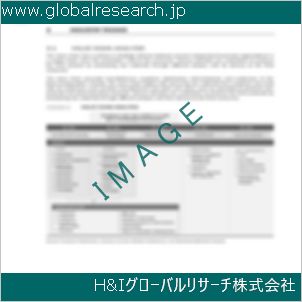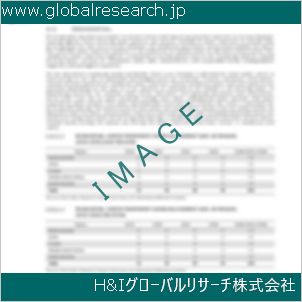1 Vein Recognition Device Market Overview
1.1 Product Definition
1.2 Vein Recognition Device Segment by Type
1.2.1 Global Vein Recognition Device Market Value Growth Rate Analysis by Type 2022 VS 2029
1.2.2 Finger Vein Recognition
1.2.3 Palm Vein Recognition
1.2.4 Others
1.3 Vein Recognition Device Segment by Application
1.3.1 Global Vein Recognition Device Market Value Growth Rate Analysis by Application: 2022 VS 2029
1.3.2 Security and Protection
1.3.3 Transportation
1.3.4 BFSI
1.3.5 Others
1.4 Global Market Growth Prospects
1.4.1 Global Vein Recognition Device Production Value Estimates and Forecasts (2018-2029)
1.4.2 Global Vein Recognition Device Production Capacity Estimates and Forecasts (2018-2029)
1.4.3 Global Vein Recognition Device Production Estimates and Forecasts (2018-2029)
1.4.4 Global Vein Recognition Device Market Average Price Estimates and Forecasts (2018-2029)
1.5 Assumptions and Limitations
2 Market Competition by Manufacturers
2.1 Global Vein Recognition Device Production Market Share by Manufacturers (2018-2023)
2.2 Global Vein Recognition Device Production Value Market Share by Manufacturers (2018-2023)
2.3 Global Key Players of Vein Recognition Device, Industry Ranking, 2021 VS 2022 VS 2023
2.4 Global Vein Recognition Device Market Share by Company Type (Tier 1, Tier 2 and Tier 3)
2.5 Global Vein Recognition Device Average Price by Manufacturers (2018-2023)
2.6 Global Key Manufacturers of Vein Recognition Device, Manufacturing Base Distribution and Headquarters
2.7 Global Key Manufacturers of Vein Recognition Device, Product Offered and Application
2.8 Global Key Manufacturers of Vein Recognition Device, Date of Enter into This Industry
2.9 Vein Recognition Device Market Competitive Situation and Trends
2.9.1 Vein Recognition Device Market Concentration Rate
2.9.2 Global 5 and 10 Largest Vein Recognition Device Players Market Share by Revenue
2.10 Mergers & Acquisitions, Expansion
3 Vein Recognition Device Production by Region
3.1 Global Vein Recognition Device Production Value Estimates and Forecasts by Region: 2018 VS 2022 VS 2029
3.2 Global Vein Recognition Device Production Value by Region (2018-2029)
3.2.1 Global Vein Recognition Device Production Value Market Share by Region (2018-2023)
3.2.2 Global Forecasted Production Value of Vein Recognition Device by Region (2024-2029)
3.3 Global Vein Recognition Device Production Estimates and Forecasts by Region: 2018 VS 2022 VS 2029
3.4 Global Vein Recognition Device Production by Region (2018-2029)
3.4.1 Global Vein Recognition Device Production Market Share by Region (2018-2023)
3.4.2 Global Forecasted Production of Vein Recognition Device by Region (2024-2029)
3.5 Global Vein Recognition Device Market Price Analysis by Region (2018-2023)
3.6 Global Vein Recognition Device Production and Value, Year-over-Year Growth
3.6.1 North America Vein Recognition Device Production Value Estimates and Forecasts (2018-2029)
3.6.2 Europe Vein Recognition Device Production Value Estimates and Forecasts (2018-2029)
3.6.3 China Vein Recognition Device Production Value Estimates and Forecasts (2018-2029)
3.6.4 Japan Vein Recognition Device Production Value Estimates and Forecasts (2018-2029)
3.6.5 South Korea Vein Recognition Device Production Value Estimates and Forecasts (2018-2029)
4 Vein Recognition Device Consumption by Region
4.1 Global Vein Recognition Device Consumption Estimates and Forecasts by Region: 2018 VS 2022 VS 2029
4.2 Global Vein Recognition Device Consumption by Region (2018-2029)
4.2.1 Global Vein Recognition Device Consumption by Region (2018-2023)
4.2.2 Global Vein Recognition Device Forecasted Consumption by Region (2024-2029)
4.3 North America
4.3.1 North America Vein Recognition Device Consumption Growth Rate by Country: 2018 VS 2022 VS 2029
4.3.2 North America Vein Recognition Device Consumption by Country (2018-2029)
4.3.3 United States
4.3.4 Canada
4.4 Europe
4.4.1 Europe Vein Recognition Device Consumption Growth Rate by Country: 2018 VS 2022 VS 2029
4.4.2 Europe Vein Recognition Device Consumption by Country (2018-2029)
4.4.3 Germany
4.4.4 France
4.4.5 U.K.
4.4.6 Italy
4.4.7 Russia
4.5 Asia Pacific
4.5.1 Asia Pacific Vein Recognition Device Consumption Growth Rate by Region: 2018 VS 2022 VS 2029
4.5.2 Asia Pacific Vein Recognition Device Consumption by Region (2018-2029)
4.5.3 China
4.5.4 Japan
4.5.5 South Korea
4.5.6 China Taiwan
4.5.7 Southeast Asia
4.5.8 India
4.6 Latin America, Middle East & Africa
4.6.1 Latin America, Middle East & Africa Vein Recognition Device Consumption Growth Rate by Country: 2018 VS 2022 VS 2029
4.6.2 Latin America, Middle East & Africa Vein Recognition Device Consumption by Country (2018-2029)
4.6.3 Mexico
4.6.4 Brazil
4.6.5 Turkey
5 Segment by Type
5.1 Global Vein Recognition Device Production by Type (2018-2029)
5.1.1 Global Vein Recognition Device Production by Type (2018-2023)
5.1.2 Global Vein Recognition Device Production by Type (2024-2029)
5.1.3 Global Vein Recognition Device Production Market Share by Type (2018-2029)
5.2 Global Vein Recognition Device Production Value by Type (2018-2029)
5.2.1 Global Vein Recognition Device Production Value by Type (2018-2023)
5.2.2 Global Vein Recognition Device Production Value by Type (2024-2029)
5.2.3 Global Vein Recognition Device Production Value Market Share by Type (2018-2029)
5.3 Global Vein Recognition Device Price by Type (2018-2029)
6 Segment by Application
6.1 Global Vein Recognition Device Production by Application (2018-2029)
6.1.1 Global Vein Recognition Device Production by Application (2018-2023)
6.1.2 Global Vein Recognition Device Production by Application (2024-2029)
6.1.3 Global Vein Recognition Device Production Market Share by Application (2018-2029)
6.2 Global Vein Recognition Device Production Value by Application (2018-2029)
6.2.1 Global Vein Recognition Device Production Value by Application (2018-2023)
6.2.2 Global Vein Recognition Device Production Value by Application (2024-2029)
6.2.3 Global Vein Recognition Device Production Value Market Share by Application (2018-2029)
6.3 Global Vein Recognition Device Price by Application (2018-2029)
7 Key Companies Profiled
7.1 FUJITSU
7.1.1 FUJITSU Vein Recognition Device Corporation Information
7.1.2 FUJITSU Vein Recognition Device Product Portfolio
7.1.3 FUJITSU Vein Recognition Device Production, Value, Price and Gross Margin (2018-2023)
7.1.4 FUJITSU Main Business and Markets Served
7.1.5 FUJITSU Recent Developments/Updates
7.2 Hitachi
7.2.1 Hitachi Vein Recognition Device Corporation Information
7.2.2 Hitachi Vein Recognition Device Product Portfolio
7.2.3 Hitachi Vein Recognition Device Production, Value, Price and Gross Margin (2018-2023)
7.2.4 Hitachi Main Business and Markets Served
7.2.5 Hitachi Recent Developments/Updates
7.3 NEC
7.3.1 NEC Vein Recognition Device Corporation Information
7.3.2 NEC Vein Recognition Device Product Portfolio
7.3.3 NEC Vein Recognition Device Production, Value, Price and Gross Margin (2018-2023)
7.3.4 NEC Main Business and Markets Served
7.3.5 NEC Recent Developments/Updates
7.4 Safran
7.4.1 Safran Vein Recognition Device Corporation Information
7.4.2 Safran Vein Recognition Device Product Portfolio
7.4.3 Safran Vein Recognition Device Production, Value, Price and Gross Margin (2018-2023)
7.4.4 Safran Main Business and Markets Served
7.4.5 Safran Recent Developments/Updates
7.5 ZKTeco
7.5.1 ZKTeco Vein Recognition Device Corporation Information
7.5.2 ZKTeco Vein Recognition Device Product Portfolio
7.5.3 ZKTeco Vein Recognition Device Production, Value, Price and Gross Margin (2018-2023)
7.5.4 ZKTeco Main Business and Markets Served
7.5.5 ZKTeco Recent Developments/Updates
7.6 Gemalto
7.6.1 Gemalto Vein Recognition Device Corporation Information
7.6.2 Gemalto Vein Recognition Device Product Portfolio
7.6.3 Gemalto Vein Recognition Device Production, Value, Price and Gross Margin (2018-2023)
7.6.4 Gemalto Main Business and Markets Served
7.6.5 Gemalto Recent Developments/Updates
7.7 BioEnable
7.7.1 BioEnable Vein Recognition Device Corporation Information
7.7.2 BioEnable Vein Recognition Device Product Portfolio
7.7.3 BioEnable Vein Recognition Device Production, Value, Price and Gross Margin (2018-2023)
7.7.4 BioEnable Main Business and Markets Served
7.7.5 BioEnable Recent Developments/Updates
7.8 IdentyTech Solutions
7.8.1 IdentyTech Solutions Vein Recognition Device Corporation Information
7.8.2 IdentyTech Solutions Vein Recognition Device Product Portfolio
7.8.3 IdentyTech Solutions Vein Recognition Device Production, Value, Price and Gross Margin (2018-2023)
7.8.4 IdentyTech Solutions Main Business and Markets Served
7.7.5 IdentyTech Solutions Recent Developments/Updates
7.9 IDLink Systems
7.9.1 IDLink Systems Vein Recognition Device Corporation Information
7.9.2 IDLink Systems Vein Recognition Device Product Portfolio
7.9.3 IDLink Systems Vein Recognition Device Production, Value, Price and Gross Margin (2018-2023)
7.9.4 IDLink Systems Main Business and Markets Served
7.9.5 IDLink Systems Recent Developments/Updates
7.10 Mantra Softech
7.10.1 Mantra Softech Vein Recognition Device Corporation Information
7.10.2 Mantra Softech Vein Recognition Device Product Portfolio
7.10.3 Mantra Softech Vein Recognition Device Production, Value, Price and Gross Margin (2018-2023)
7.10.4 Mantra Softech Main Business and Markets Served
7.10.5 Mantra Softech Recent Developments/Updates
7.11 Matrix COSEC
7.11.1 Matrix COSEC Vein Recognition Device Corporation Information
7.11.2 Matrix COSEC Vein Recognition Device Product Portfolio
7.11.3 Matrix COSEC Vein Recognition Device Production, Value, Price and Gross Margin (2018-2023)
7.11.4 Matrix COSEC Main Business and Markets Served
7.11.5 Matrix COSEC Recent Developments/Updates
7.12 Mofiria
7.12.1 Mofiria Vein Recognition Device Corporation Information
7.12.2 Mofiria Vein Recognition Device Product Portfolio
7.12.3 Mofiria Vein Recognition Device Production, Value, Price and Gross Margin (2018-2023)
7.12.4 Mofiria Main Business and Markets Served
7.12.5 Mofiria Recent Developments/Updates
8 Industry Chain and Sales Channels Analysis
8.1 Vein Recognition Device Industry Chain Analysis
8.2 Vein Recognition Device Key Raw Materials
8.2.1 Key Raw Materials
8.2.2 Raw Materials Key Suppliers
8.3 Vein Recognition Device Production Mode & Process
8.4 Vein Recognition Device Sales and Marketing
8.4.1 Vein Recognition Device Sales Channels
8.4.2 Vein Recognition Device Distributors
8.5 Vein Recognition Device Customers
9 Vein Recognition Device Market Dynamics
9.1 Vein Recognition Device Industry Trends
9.2 Vein Recognition Device Market Drivers
9.3 Vein Recognition Device Market Challenges
9.4 Vein Recognition Device Market Restraints
10 Research Finding and Conclusion
11 Methodology and Data Source
11.1 Methodology/Research Approach
11.1.1 Research Programs/Design
11.1.2 Market Size Estimation
11.1.3 Market Breakdown and Data Triangulation
11.2 Data Source
11.2.1 Secondary Sources
11.2.2 Primary Sources
11.3 Author List
11.4 Disclaimer
| ※参考情報 静脈認識装置は、生体認証技術の一つとして近年注目されています。この装置は、個人の静脈のパターンを読み取り、その情報を基に本人確認を行うシステムです。静脈認識は、顔認識や指紋認識といった他の生体認証技術と比較していくつかの特長があります。 静脈認識装置の基本的な概念として、静脈は個人の体内に存在する血管のパターンであり、そのパターンは個々人によって異なります。静脈認識では、通常、赤外線を使用して血液中のヘモグロビンを照射し、その反射をカメラで捉えることによって静脈のパターンを取得します。この方法は、静脈が皮膚の下に埋まっているため、他の生体情報と比較してセキュリティが高いとされます。 静脈認識装置の特徴の一つは、非接触型であることです。これにより、衛生面やユーザーの快適性に配慮した認証が可能です。また、静脈のパターンは生涯を通じて変わることが少ないため、一度登録した情報は長期間使用することができます。この特性から、静脈認識は一度設定すれば長期間安定して利用できるというメリットがあります。 静脈認識装置には、さまざまな種類があります。主に、指静脈認識と手のひら静脈認識が挙げられます。指静脈認識は、指の静脈パターンを用いるもので、一般的に小型化されており、デバイスへの組み込みが容易です。一方、手のひら静脈認識は、手のひら全体の静脈パターンを読み取るもので、一般に大型の装置が用いられます。これらの種類は、利用用途や環境に応じて使い分けられることが多いです。 静脈認識装置は、様々な用途に利用されています。例えば、金融機関での本人確認や、スマートフォンやPCなどのデバイスロック解除に使われています。また、病院やクリニックでの患者確認、アクセス制御システム、さらには公共交通機関の乗車券としての利用など、幅広い分野への展開が見られます。特に金融機関では、セキュリティの向上が求められるため、静脈認識は非常に有効な手段とされています。 また、静脈認識技術は、他の生体認証技術と組み合わせて使用されることが多いです。例えば、静脈認識と顔認識を統合することにより、より高いセキュリティレベルを実現することができます。このような統合的なアプローチは、特にセキュリティが浸透しない環境や大量のデータを扱う場合に効果的です。 関連技術としては、画像処理技術や機械学習技術があります。静脈のパターンを正確に識別するためには、適切な画像処理が必要です。また、機械学習を用いることで、静脈パターンの学習と認識精度を向上させることが可能です。特に、ディープラーニング技術の進展により、従来の技術では困難であった複雑なパターン認識が実現されつつあります。 静脈認識装置は今後も進化が期待される分野であり、より高精度で迅速な認識技術の開発が進むと予想されます。セキュリティ面では、静脈が他者に模倣されにくい特性が、ますます重視されることになります。企業や機関において、個人データの漏洩防止や、不正アクセスの防止が求められる中、静脈認識技術はますます重要な役割を担うことでしょう。 このように、静脈認識装置は、静脈の特性を用い、人間の固有性を強調した安全な認証方法を提供するものです。静脈認識の発展は、私たちの生活をより安全で便利にするための重要なステップと言えるでしょう。 |
❖ 免責事項 ❖
http://www.globalresearch.jp/disclaimer












